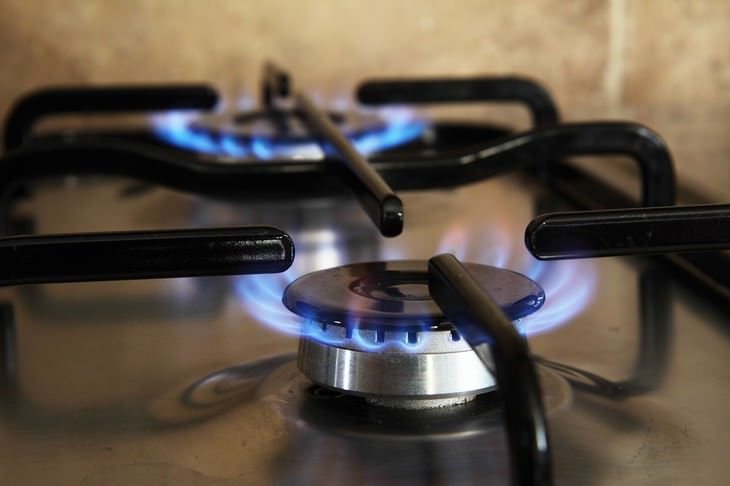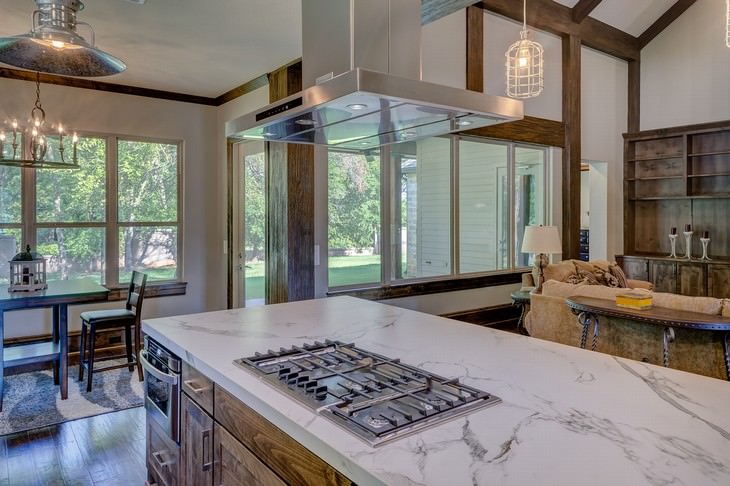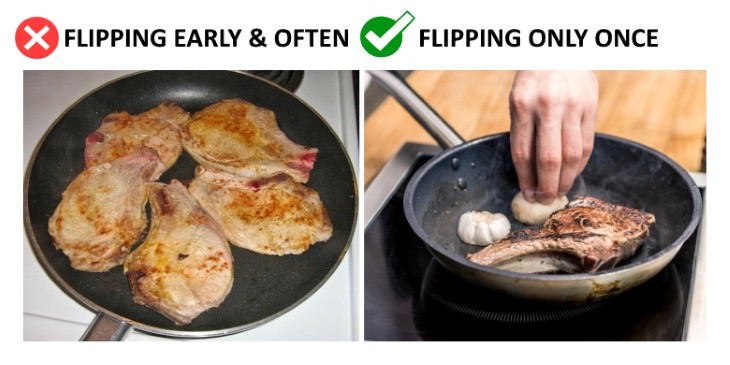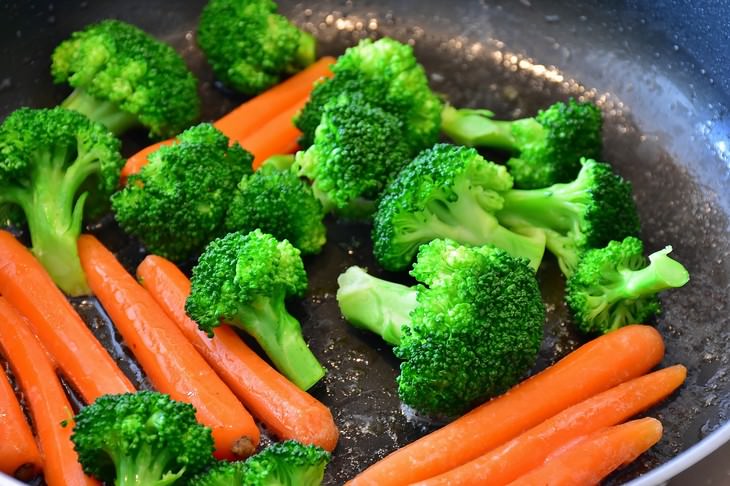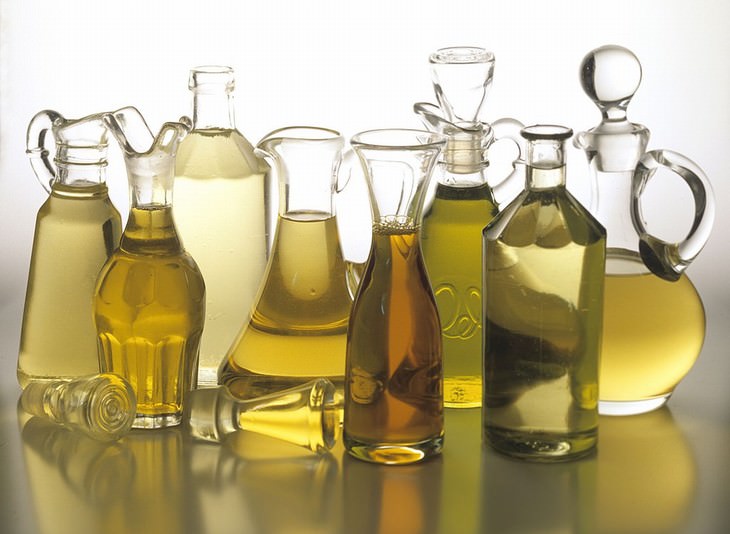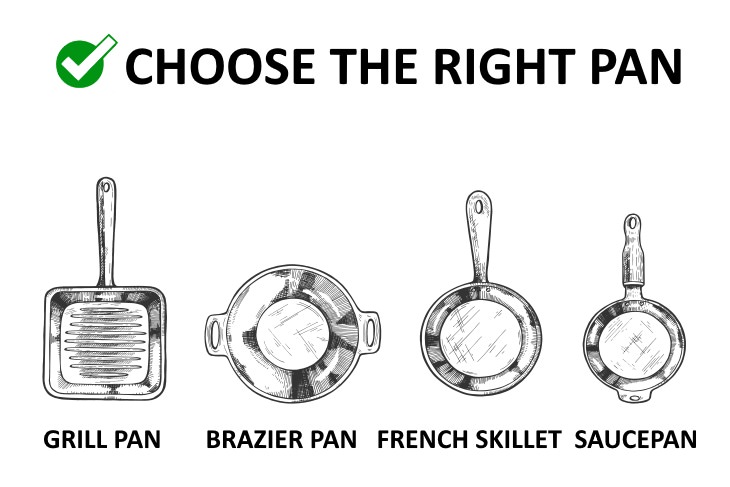Mistake 1. Not taking your stove into account
Different types of stoves heat up and change temperatures with different speeds, and not taking this into account can affect your results. For example, electric stoves change temperatures way slower than, let’s say, a gas stove, so switching quickly from searing to simmering using an electric stove can prove to be challenging, but still possible.
To solve this, simply turn on a second burner on low and when you need to lower the heat, transfer your pot or pan to the second burner. The bottom line is that your stove matters just as much as the ingredients or cookware you’re using, so always keep that in mind when trying out a new dish.
Mistake 2. Overcrowding the pan
When you have to cook a large family dinner, you might be tempted to cook a bigger batch in the same size pan you usually use, but this is a serious mistake. If you do so, your food will cook unevenly, with the part that ended up on the top being at risk of hardly being cooked at all.
Also, forget about a crispy or caramelized crust, as the abundance of food will not allow you to sear the food properly. To avoid this mistake, you will either have to cook in 2 batches or use 2 pans to prepare your food. How much food is too much, you ask? Simply make sure every ingredient in the pan gets plenty of heat at all times.
Mistake 3. Cooking on the wrong burner
Many people don’t know this, but gas burners come in different sizes because each size corresponds to the size of the pan or pot. This is because gas burners usually cannot heat up a pan as evenly as an electric burner and if you’re trying to sear a steak on the smallest or the mid-sized one, it won't heat up your pan enough.
On the other hand, sauteing a sauce may prove difficult if you’re using the largest burner. That’s why you should always use the larger burners for stock pots and frying pans, but use the smallest or medium-sized ones for sauces.
Mistake 4. Consider your range hood
It’s key to turn on your range hood while cooking, as it sucks up all the smells, oils, and steam from your stovetop, which allows your dishes to taste much better and have a nicer texture. However, with time, it can accumulate a lot of solidified oils, dust and other gunk in it, and if not cleaned regularly, it can actually make your dishes smell bad.
Clean your range hood regularly with detergent and a damp cloth to prevent this problem.
Mistake 5. Not drying off the ingredients before cooking
Water and hot oil don’t mix well together and the resulting splatter may even cause skin burns, so always dry off your ingredients before cooking them. I personally even pat-dry the extra moisture off a steak with a paper towel before grilling or searing it, which, I find, creates a crispier and tastier exterior (apart from not injuring me).
Mistake 6. Stirring or flipping too early and too often
One of the most intimidating foods to cook on a stove is meat or fish, as it’s so easy to make it too tough or stringy without having that crispy crust of your dreams. One of the main mistakes that will definitely yield these honestly underwhelming results is flipping, stirring or moving around the meat too often. When cooking a steak, for example, you should ideally only turn it once and don’t move it until it’s crisped up.
To know if your meat or fish steak is ready, gently lift one side of the steak and see if it has a golden exterior and doesn’t stick to the pan. If so, it’s ready to be flipped. If you’re preparing chicken strips or even seared mushrooms or veggies, follow the same rule, don’t move your food around the pan until it gets a nice golden brown crust, otherwise, it will stick to the pan.
Mistake 7. Putting cold or frozen foods into the pan
Another common stovetop cooking mistake is taking the ingredients straight out of the fridge and placing it on to the heat. This is the wrong thing to do because the cold meat, veggies or whatnot will lower the temperature of the pan, and that means that your food will be more likely to stick to the pan and cook unevenly.
To avoid this mistake, simply take your ingredients out of the fridge ahead of time and let them reach room temperature.
Mistake 8. Using the wrong kind of oil or fat
Olive oil is exquisite in salads, but it may not be your best friend when you need to cook something over a high heat, as it has a relatively lower boiling point than other oils, which means that it will start burning rather fast, plus it has quite a pronounced taste that you may not always want in your dish.
Try using neutral oils, such as grapeseed or rice bran oil when you need high heat (when making a stir fry or searing something). You won’t be able to taste these oils and they will make it easier for you to caramelize or crisp things up. Finally, don’t forget that you can combine different oils, too. For example, mixing olive oil and butter yields a very interesting taste and works oh so well with seafood.
Mistake 9. Not setting the food aside after cooking
When you see that your dish is ready, don’t simply turn off the burner and walk away from the stove. This is because the burner will continue being hot for a while, and it will continue cooking your food during that time, whether you want it or not. So, instead, it’s best to remove the pan from the stovetop completely or transfer it to a cold burner.
Also, it’s a useful habit to always keep your pan in one hand and control the amount of heat your food gets by lifting the pan from time to time, just like most chefs do. This will prevent your food from burning once and for all, but admittedly, it does take a bit more attention and time on your part.
Mistake 10. Using the wrong pan for a specific dish
Using one pan for all applications may save you some money and kitchen space, but it may also affect your food. The thing is that different pans are specifically designed to do a different job. Just like you wouldn’t want to jog in a pair of high-heeled shoes, you wouldn’t want to make pancakes in a wok.
It’s true that some frying pans are more universal than others and you can probably make pretty much everything in a cast iron skillet, it’s not a good idea to use a nonstick pan for everything, as these pans are best suited for fluffy pancakes or soft scrambled eggs.
Similarly, stainless steel pans are best for getting that crispy crust and searing meat, fish, mushrooms, potatoes, and other vegetables. That’s why it’s best to have a few different kinds of pans in the kitchen and use them accordingly to the results you want to achieve.



